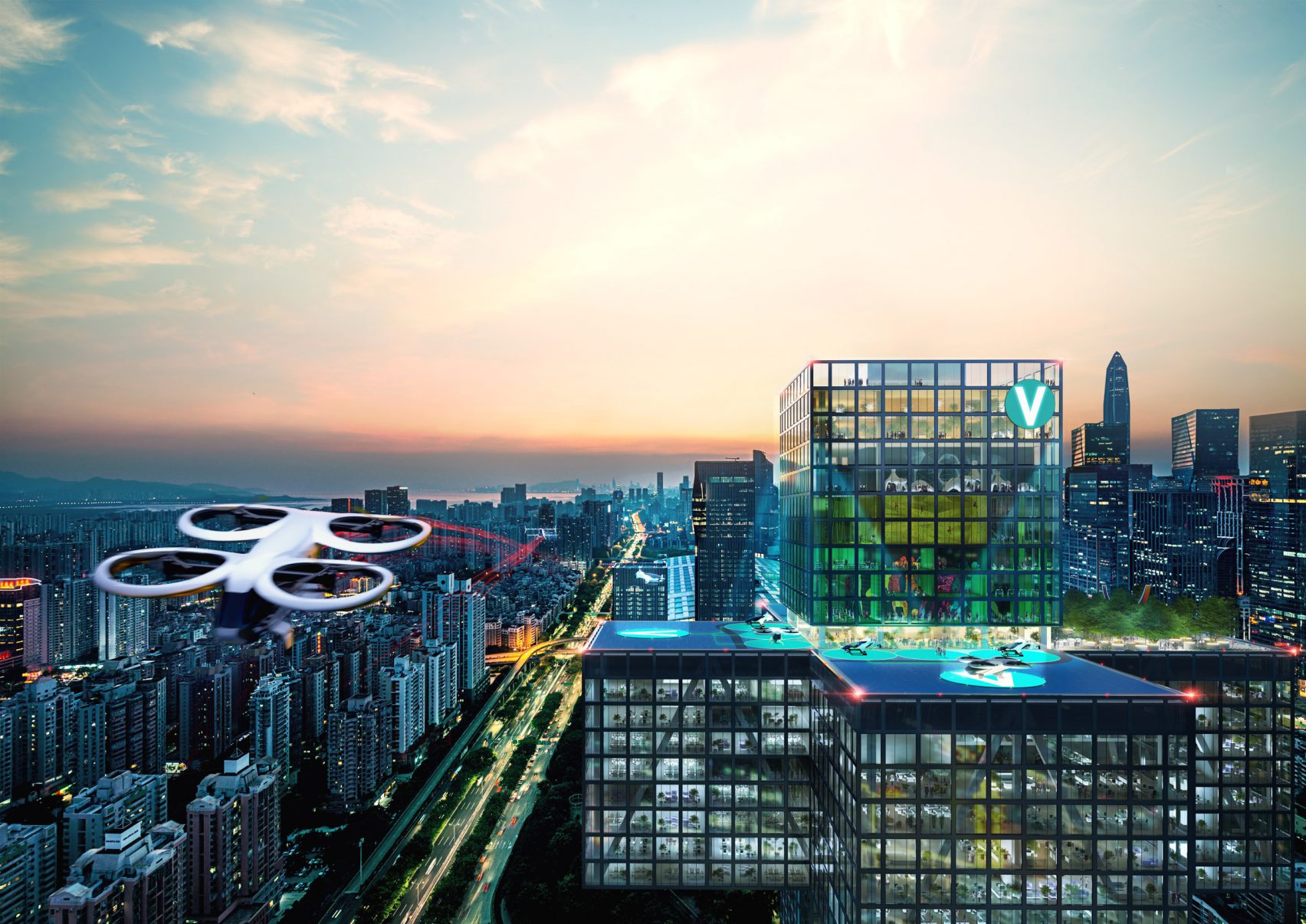
According to Dezeen Magazine, Dutch architecture firm MVRDV has collaborated with aircraft manufacturer Airbus to research how landing hubs for passenger drones called vertiports, could become part of transportation networks in future cities.
The report, called Urban Air Mobility (UAM) City Integration, focused on how vertiports might serve aerial vehicle technology and enrich existing transport networks.
MVRDV founding partner Winy Maas said, “As cities become denser and technologies improve, it becomes increasingly clear that the truly three-dimensional city – one that includes flying vehicles – is surely a model of the future.” He imagines “a city where my mobility is at my balcony!”
Airbus currently operates ‘Voom’, an on-demand helicopter booking platform, and is developing an autonomous air taxi passenger drone that runs on electricity.
MVRDV looked at how vertiports could integrate aerial and terrestrial transport links in cities around the world including Shenzhen, Jakarta, Sao Paolo, Los Angeles, and San Francisco.
One case study examined how passenger drones might take people to the Coachella music festival. Others looked at how tourist destinations could be linked up in Shenzhen, or fly above traffic in Los Angeles.
Vertiports, said the report, might connect disparate or disadvantaged neighbourhoods and remote urban areas by air and provide transport links to areas currently under-served by more traditional rail and road routes without the need for expensive infrastructure.
The report stressed that it investigated how these hubs could be placed so as to minimise noise pollution and be “beneficial for people of all backgrounds”.
The evaluation suggests that in developing countries, cities that don’t have established public transport networks such as a subway system might leapfrog straight to vertiports.
“Vertiports are thought of not just as stations, but also as hubs of renewable energy, data, and public amenities, that can scale while remaining sustainable and resilient,” it said. “Air transport incentivises an ecologically responsible contribution to the local smart grids of energy and data.”
The UAM evaluation also looked at how vertiports could double up as “opportunity hubs” by hosting education and medical facilities, or serving as incubators for new businesses.
MVRDV worked with Squint/Opera to present their findings in an immersive exhibition called ‘The City and the Sky Above’ for the 2019 Bi-city Biennale of Urbanism\Architecture in Shenzhen.
For more information
https://www.dezeen.com/2020/03/04/mvrdv-airbus-vertiports-flying-vehicle-city-report/
(Top pic: MVRDV)

